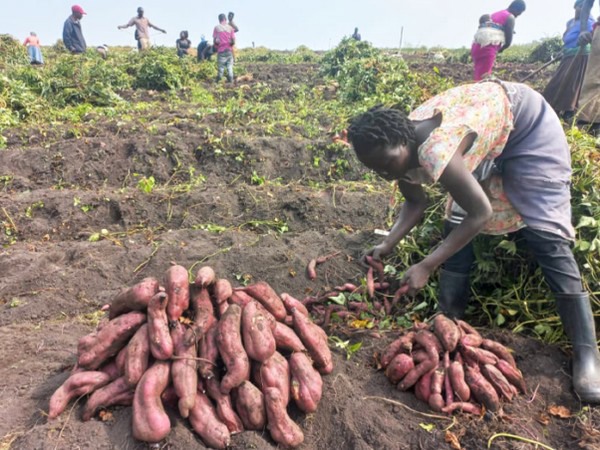Sweet potato has great potential for improving food security, nutrition, and incomes, and scientists at the International Potato Center (CIP) are working with their peers at agricultural research institutions across Africa and Asia to increase that potential by breeding new varieties that combine high yield, nutritional value and climate resilience with other characteristics women and men demand.
An innovation that could make a major contribution to this quest is population hybrid breeding, in which breeders cross genetically different parents to take advantage of hybrid vigor, or heterosis, which refers to the fact that the progeny of genetically different parents can be superior to either parent. Hybrid maize is one of the great agricultural success stories of the 20th century, making a major contribution to food availability, and crop improvement programs across the globe are trying to repeat it with other crops.
Sweetpotato is more challenging, in part because it is heterozygous – meaning that instead of having paired genes like maize (diploid), its genes are arranged in groups of six (hexaploid) – making it more difficult to predict the results of a breeding cross. However, an article by several CIP scientists published in Frontiers in Plant Science details an approach to population hybrid breeding of sweetpotato that has had impressive results – yield improvements ranging from 97% to 132% relative to the foundation (grandparents). The article, based on trials in Peru, provides the latest evidence that years of efforts to implement hybrid breeding in that root crop have been a worthy investment.
Breeding innovation
“When I first considered testing hybrid breeding with sweetpotato two decades ago, it was a pipe dream, but it has since evolved into a highly successful breeding scheme,” says CIP scientist and co-author Wolfgang Grüneberg.
He explains that his endeavor to use hybrid breeding on sweetpotato was inspired by French plant breeder André Gallais, who wrote about the method’s potential in a textbook on quantitative genetics and breeding. With Grüneberg’s guidance, breeders in Peru, Mozambique and Uganda undertook experiments in hybrid breeding in several sweetpotato breeding populations. They began by dividing each population into two genetically different groups based on sequencing data, then crossed individuals among groups to identify parental combinations that produce the advantage of hybrid vigor. An important component of the approach is “reciprocal recurrent selection,” through which breeders evaluate the progeny of crosses to identify the best parents – those most likely to produce offspring with hybrid vigor – for use in subsequent breeding.
Though still relatively new, population hybrid breeding has produced eight candidates for release as new sweetpotato varieties in Uganda, 30 in Peru and potential varieties for Mozambique. CIP has also sent the seeds from hybrid sweetpotato crosses in Peru to Asia for planting and evaluation.
For more information: 
International Potato Center
Avenida La Molina 1895
La Molina Apartado 1558
Lima 12, Peru
Tel: 511-3496017











